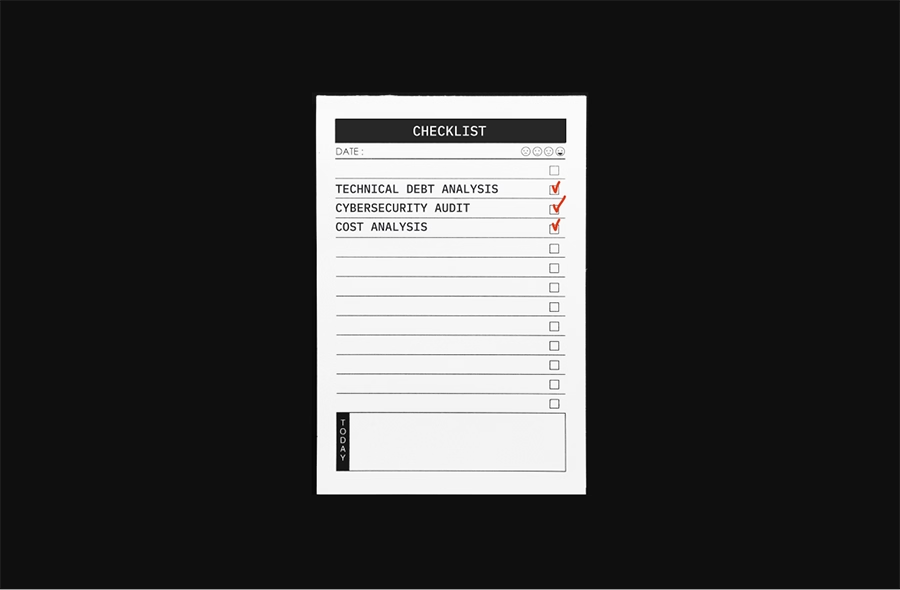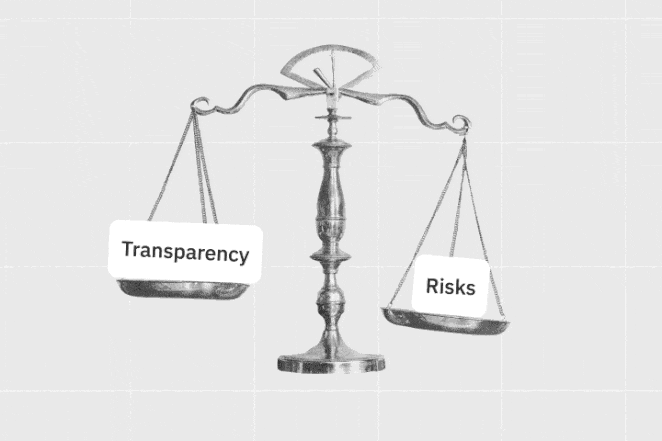How difficult will it be to integrate the target company’s technology into your current systems? Could outdated tools or accumulated tech debt lead to unexpected costs? Are there any compliance risks you might be inheriting?
These are important questions to consider when preparing for an acquisition — and technical due diligence (TDD) is the process that helps you get clear answers.
In this article, we’ll break down what a technical due diligence process looks like, what to pay attention to, and how to spot potential red flags. We’ll also share useful checklists and frameworks so you can carry out an assessment independently — or be better prepared to work with a partner if needed.
Technical Due Diligence: Alarm Bells You Can’t Ignore
According to KPMG, a global professional services network, 62% of deals don’t hit their financial targets mainly because of poor due diligence. Consequently, the success of your investment depends on how well you do your research and how ready you are to handle the risks and opportunities that come up after you acquire the company.
Sometimes technical due diligence might uncover major red flags that make you rethink the whole acquisition. Here are the warning signs that might make you think twice about buying a tech company:

Heavy technical debt
If IT due diligence software audit reveals serious technical debt, you should carefully consider the cost of rework. Technical debt translates into increased maintenance costs, a slower development process, and diminished system reliability. Inheriting the abandoned technical mess can seriously drain your investment’s value over time.
Incompatibility with your existing systems
Make sure the solution you want to buy can get integrated into your system. Otherwise, you’ll end up dealing with a lot of headaches and extra costs trying to make everything work together.
Non-compliance issues
Watch out for non-compliance problems. These can result in huge fines and legal hassles later on. Plus, it can eat up your time and resources. It’s a risk you don’t want to take.
Keep an eye on these red flags, and make sure you’re fully prepared before jumping into the deal. That’s why when you decide on the DD provider, check if their assessment covers the risks mentioned above, plus those your business requires.
Let’s briefly mention the main components of technical DD at MEV.
Tech DD at MEV: What do we assess?
The technical due diligence checklist varies from company to company and depends on the specific aspects you want to prioritize. But in general, tech DD covers some basic topics for assessing the technology. Here is what we focus on when conducting DD for our clients.

Technology stack assessment
- Architecture: Is the system architecture well-documented and suitable for current and future needs? Does it support modularity and easy integration with other systems? Are architectural changes reviewed and validated through a formal process?
- Scalability: How does the system handle increased loads? Are strategies for horizontal and vertical scaling implemented? Are there any bottlenecks that could hinder future scalability?
- Code quality: Are coding standards clearly defined, documented, and followed? Is there a code review process in place? Are automated tools like linters and static analyzers used to maintain code quality?
- Performance: How is system performance monitored and measured? Are key performance indicators (KPIs) established? Are performance optimizations planned and implemented iteratively?
- Maintainability: Is the codebase well-organized and documented for ease of understanding and further development? Are naming conventions for variables, functions, and classes consistent and meaningful? How easy is it for new developers to get up to speed with the codebase?
Cybersecurity audit
- Vulnerabilities: Are dependencies regularly scanned for vulnerabilities? Is there a process for managing security incidents?
- Compliance risks: Do the components adhere to relevant compliance and security standards (e.g., GDPR, PCI DSS)?
- Security gaps: Is all data-at-rest encrypted (AES/RSA with min 256 bits)? Are security events logged and monitored (e.g. failed auth attempts)?
- Access controls: Are authentication and authorization implemented correctly? Is there a password policy in place?
Integration potential assessment
- Compatibility with existing technologies: Is the system compatible with current software and hardware?
- Tech documentation: Is the codebase properly documented (e.g., comments, README files)? Is business logic clearly defined? Are APIs properly versioned? Are tools in place for automated documentation generation? Are API specifications documented (e.g., OpenAPI, Swagger)?
- Data integration: Are there existing ETL (Extract, Transform, Load) processes in place?
- Interoperability: How easily can the system adapt to new integration requirements?
Technical debt analysis
- Assessment of current technical debt: Are there legacy components that need frequent fixes or updates? Are there any bottlenecks caused by outdated technology that could hinder future growth?
- Resource allocation: Is the team spending more time fixing issues than building new features?
- Projected costs for maintenance or upgrades: What is the estimated cost of upgrading legacy components or migrating to a more modern technology stack?
DevOps and infrastructure review
- Performance review of cloud, servers, and networks: Is deployment automated across all environments (e.g., dev, staging, production)?
- Opportunities to maximize CI/CD automation: Is there a CI/CD pipeline in place for the project? Are CI/CD pipelines monitored for failures?
- Disaster recovery and backup: Is there a disaster recovery plan in place? How often are backups performed, and are they tested regularly?
Cost analysis
Recommendations to optimize operational expenses:
- Cloud infrastructure costs: Is it possible to reduce cloud spending by optimizing storage?
- Development and maintenance costs: Are there opportunities to reduce the time spent on manual processes by automating certain tasks?
- Tech stack upgrade costs: Are there any compatibility or integration issues that might increase the upgrade cost?
Of course, this isn’t the full technical due diligence checklist we use at MEV – we’ll get to that soon. For now, using our example, let’s see how due diligence should be done step by step.
How it due diligence works with MEV
Tech due diligence usually takes around 2-4 weeks, depending on how complex the system is and how deep we need to dig. Regardless, our due diligence framework always has three key components: auditing the current state, defining the desired one, and assessing the gap between those two. Here’s what that looks like:
- Definition of the desired state
Before we start the assessment itself, we clarify your business and technical requirements and then align our tech assessment with your long-term goals, whether that’s user growth, expanding features, or entering new markets. For example, if you plan to add new features, we’d assess how easy it is to add them without disrupting what’s already working.
- Audit of the current state
Next, we kick off the core part – the actual assessment of the target company’s existing technology. It includes reviewing the source code, scalability, security, outdated technologies, components that may need replacement, and more.
- The gap between the two
Finally, our team evaluates the project based on how the desired state differs from the current one.
In our experience, clients usually fall into two groups: hose with technical requirements for due diligence and those without. That’s why we approach tech DD in two main ways. Let’s go over what they are.

Tech requirements-driven approach
In this case, the client comes to us with specific tech requirements and wants to see if the target company’s tech will be compatible with their existing systems. For example, they might need the target’s tech to match their standards for cloud providers, ensuring data storage locations are in regions meeting compliances.
So, we check if the target’s tech meets the client’s standards and figure out the cost to get it in line if it doesn’t. It involves assessing how much effort and resources will be needed to upgrade code, move data, or whatever is required to make everything fit together.
Business requirements-driven approach
Sometimes, the client doesn’t have specific tech requirements and is more focused on the business goals of the deal. In such situations, we take those business goals and translate them into tech terms to see if the current technology can handle them. We also estimate how much it’ll cost to scale the tech to meet those goals. For example, if the client is looking to increase the number of users, we’d look at how much it’ll take to upgrade the target’s infrastructure to support that growth.
As practice shows, no matter what specific requirements buy-side companies have for due diligence, they usually run into the same challenges when checking out the target company’s tech. Let’s briefly outline the most common ones we uncover and address.
Risks that our tech due diligence covers
They say, forewarned is forearmed. When you know the technical ins and outs of the target company, you can decide if you have the time, money, and resources to fix any issues that might come up. So here are the common pitfalls our team can help you identify before acquiring a company.

Tech can’t scale
In most cases, growth is the goal when buying a tech company. So why go for an acquisition that won’t scale in the future? If the tech can’t keep up, you can lose clients, money, and, most importantly, time. That’s why we do tech DD – to make sure the acquisition won’t hold you back in the future.
Security issues and non-compliance
Data breaches, fines, and penalties – these are just the start of what you might face with security vulnerabilities or non-compliance in the target tech. But it gets worse. Fixing these issues diverts funds from other important areas. Clients may leave for more secure competitors, while lawsuits from affected parties can further drain your resources. Don’t let that happen to you. If you team up with MEV, our technology due diligence service covers security and compliance to give you clear estimates and peace of mind.
Overhyped tech to drive valuation
Sometimes, companies splash out on pricey technologies they don’t need, thinking it will help them beat the competition. For example, imagine a company spending a fortune on blockchain for their supply chain when a simple database would do the job just as well. It may look impressive, but it doesn’t necessarily deliver real business impact or sustainability.
That’s why we carefully evaluate whether the tech isn’t just for show and actually adds real, long-lasting value.
Inefficient processes
Outdated or poorly designed workflows are a hidden drain on your budget. When processes aren’t optimized, they create bottlenecks, delay project timelines, and lead to the unnecessary duplication of efforts. For instance, if a target company relies on a legacy system that requires manual data entry, there is a higher risk of human error, slower decision-making, and delays in critical processes. These inefficiencies not only cost time but also increase operational costs, as more resources are needed to manage, correct, and oversee these processes.
Poor data handling
If data is not properly structured, stored, or maintained, it can lead to inaccurate insights and missed opportunities. Imagine a company that keeps customer data in different formats across several systems. It becomes hard to see clear patterns in customer behavior or trends. That’s why, during tech due diligence, we take a close look at how the software solution of the target company manages data, how it’s collected, stored, and analyzed, and what tools are used to keep it accurate and secure.
Inappropriate tech stack
When buying a tech company, you definitely don’t want to deal with a tech stack that hinders your growth. If the company uses proprietary tech or platforms that don’t play well with others, it will be tough to innovate. The same goes for using outdated or less common technologies that aren’t getting updates or support anymore. So during the due diligence process, it’s important to check if the tech stack is something that can grow with you and support your long-term plans.
Looking at these risks, you might wonder why they arise. Why do companies let them appear if they’re clearly disrupting things? The answer is pretty simple – these companies don’t have proper technology governance in place. Let’s briefly outline what it means.
Lack of technology governance is the most common issue
We’ve done several tech due diligence assessments for our clients, and most problems come from the lack of a systematic approach to technology governance.Let’s look at some possible scenarios of how it happens.
Let’s say you acquire a tech company that’s been around for a few years. Over time, different teams have built parts of the system without properly documenting their work. The architecture – the blueprint of the system – is rarely updated or reviewed. The outcome? When you need to update a feature or fix a bug, you can’t do it efficiently. The documentation is either missing or incomplete, creating big knowledge gaps. Your team has to piece together how everything will work together, which makes managing, updating, or troubleshooting the system a real headache.
Here is another example. Many companies struggle with handover processes. It’s not just about incomplete documentation. Other issues include unclear responsibilities, missing permissions, and incomplete issue logs. For example, if roles aren’t clearly defined, the new team won’t know who’s in charge of what. And if they don’t get the right access to systems and tools, they can’t do their job properly from day one.
We could go on listing countless scenarios describing tech snags revealed during reviews. But with MEV, you get a scored technology assessment that highlights all these issues before you finalize the deal.
What do you get as a result of our evaluation?
After the tech DD review, you get a report with our findings and a comprehensive analysis of architecture, infrastructure, scalability, code quality, security, and CI/CD. In addition to these findings, the report includes actionable recommendations including practical steps and strategies to improve performance, mitigate risks, and ensure the tech stack is ready for future challenges.
If you want to run technical due diligence yourself, we've prepared a checklist to make it easier. Let’s have a closer look at it.
The Technical Due Diligence Checklist we use at MEV
Our due diligence checklist covers 12 main components, including:

Each component comes with a set of key questions or checkboxes designed to see how effectively the target company adheres to specific requirements. For instance, when assessing security, we check if the company follows encryption standards, implements a password policy, conducts penetration testing, regularly updates service account credentials, and performs many more operations to protect its data and minimize vulnerabilities.

We also check whether the company has the right tools and processes in place to support effective teamwork, such asJira and Slack to stay organized, and whether they have regular meetings. We also look at how well knowledge is shared, if roles are clear, and if new team members are properly onboarded.

A separate block is devoted to version control, namely how well the company manages and tracks changes to its codebase. When version control is properly implemented, it allows us to follow changes to code over time and maintain clean, organized code. It also acts as a backup for the codebase. If something happens to the project files, you can restore them from the version control system.

Of course, we assess the tech architecture in detail to ensure it aligns with best practices and is capable of supporting the company’s current and future needs.

Want to do a tech DD? Here is how much it costs and what we need
Our technical due diligence services typically range from $5,000 to $30,000, depending on the size and complexity of the system. As we want to align our assessment with the client’s long-term goals and plans, having a person with a deep understanding of the seller company’s technology, architecture, and goals would be helpful. Having them involved leads to smoother communication and a more thorough evaluation of the system, leaving no room for bias or personal preferences.
Access Requirements for Tech Due Diligence
If you decide to partner with MEV for tech due diligence, you have to provide access to the following systems:

When the stakes are high, stack the odds in your favor with tech DD
The world of mergers and acquisitions is often filled with hidden technical risks that can make or break your deal. If you're ready to go beyond surface-level assessments and uncover the true potential (and pitfalls) of your target company’s tech, it’s time for technical due diligence.
Gone are the days of rushing into acquisitions without understanding the full tech landscape. Thorough, actionable tech due diligence is what will help you make the best decisions and protect your investment.
If you take anything away from this, we hope it’s the confidence to order a comprehensive tech due diligence assessment from MEV to power your next M&A move.
Reach out to us today to get started!
Frequently Asked Questions (FAQ)







.png)
.png)
.webp)








